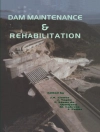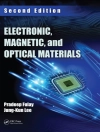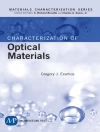This book presents recent and upcoming technological advancements in millimeter-wave (mm-wave), infrared (IR) and terahertz (THz) frequency spectrums. The scope of this book includes a significantly long portion of the electromagnetic spectrum, starting from the mm-waves (i.e. 30 GHz) and extended up to the end of the near-IR spectrum (i.e. 450 THz). Most significant aspect of this portion of the electromagnetic spectrum is that it includes a frequency regime where the gradual technological transition from electronics to photonics occurred. The book especially focuses on the recent advancements and several research issues related to materials, sources, detectors, passive circuits, advanced signal processing and image processing algorithms for mm-wave, IR and THz frequency bands. The book covers a very wide range of readers from basic science to technological experts as well as research scholars.
Innehållsförteckning
Introduction to Millimeter-Wave, Infrared and Terahertz Technologies.- Sensitivity Analysis of Substrate Integrated Waveguide at Ku Band for Photonic Circuit Integration.- Possibilities of Realizing an Integrated Power Module for Terahertz Wave Generation.- Design of Si (1-x-y) Sn(x) C(y) /Si Hetrostructure EOM for Optical Signal Processing Applications.- All Optical Encryption and Decryption Circuit.- Design and Optimization of Graphene Nanoribbon TFETs for Low Power Digital Applications.- Birhythmic Behavior in a new Dual Loop Optoelectronic Oscillator.- Performance analysis of optical arithmetic circuit using artificial neural network.
Om författaren
Dr. Aritra Acharyya is currently working at Department of Electronics and Communication Engineering, Cooch Behar Government Engineering College, Harinchawra, Ghughumari, West Bengal, 736170, India, as Assistant Professor. He was born in 1986. He received B.E. and M.Tech. degrees from IIEST, Shibpur, India, and Institute of Radio Physics and Electronics, University of Calcutta, India, in the years 2007 and 2010 respectively. Finally he obtained Ph.D. degree from Institute of Radio Physics and Electronics, University of Calcutta, in the year 2016. His research interests are high frequency semiconductor devices, nano-structures, semiconductor physics, transport phenomena, quantum mechanics, optoelectronics, etc. He has published 88 research papers in peer reviewed national and international journals, 70 research papers in national and international conference proceedings, and several book chapters. He also authored and edited 07 and 05 number of books respectively.
Dr. Arindam Biswas Assistant Professor, School of Mines and Metallurgy, Kazi Nazrul University, Asansol, Burdwan, West Bengal, 713340, India. He was born in West Bengal, India in 1984. He received M.Tech. degree in Radio Physics and Electronics from University of Calcutta, India in 2010 and Ph.D. from NIT Durgapur in 2013. He was a Post-Doctoral Researcher at Pusan National University, South Korea with prestigious BK21PLUS Fellowship, Republic of Korea. He got Visiting Professor at Research Institute of Electronics, Shizouka University, Japan. He has been selected for IE(I) Young Engineer Award: 2019–2020 in Electronics and Telecommunication Engineering discipline, Institute of Engineers, India. Dr. Biswas has 10 years’ of experience in teaching research and administration. Presently Dr. Biswas is working as an Assistant Professor in School of Mines and Metallurgy at Kazi Nazrul University, Asansol, West Bengal, India. He has 48 technical paper in different journals and 30 conference proceedings and six books, one edited volume and one book chapter with international repute. Dr. Biswas received research grant from Science and Engineering Research Board, Govt of India, under Early Career Research Scheme for research in Terahertz based Ga N Source. He also received Research Grant from Centre of Biomedical Engineering, Tokoyo Medical and Dental University in association with RIE, Shizouka University, Japan for study of biomedical THz Imaging based on WBG semiconductor IMPATT Source. Presently Dr. Biswas is serving as an Associate Editor of Cluster Computing, Springer (SCI Indexed) and as a guest editor of Nanoscience and Nanotechnology-Asia (Scopus Indexed), Recent Patent in Material Science (Scopus Indexed), Bentham science Publisher. Dr. Biswas has produced four Ph.D. students in different topics of applied optics and high frequency semiconductor device. He has organized and chaired difference International Conferences in India and abroad. His research interest is in carrier transport in low dimensional system and electronic device, non-linear optical communication, THz Semiconductor Source. Dr. Biswas acted as reviewer for reputed journals, and member of the Institute of Engineers (India) and Regular Fellow of Optical Society of India (India).
Dr. Hiroshi Inokawa Professor, Research Institute of Electronics, Shizuoka University, 3-5-1 Johoku, Naka-ku, Hamamatsu 432-8011, Japan. He received B.S., M.S., and Ph.D. degrees in electrical engineering from Kyoto University, Japan in 1980, 1982 and 1985, respectively. In 1985, he joined the Atsugi Electrical Communications Laboratories, Nippon Telegraph and Telephone Corporation (NTT), Kanagawa, Japan. Since then, he has been engaged in the research and development of scaled-down CMOS devices and silicon single-electron devices. During the course of his research, he invented the basic structure of Fin FET in 1989 and single-electron multiple-valued logic in 2001, and received IEEEInternational Symposium on Multiple-Valued Logic (ISMVL) Outstanding Contributed Paper Awards in 2004 and 2006, Director’s Award of NTT Basic Research Laboratories in 2004, 28th JSAP Award for the Best Original Paper in 2006, etc. In 2006, he became a professor of the Research Institute of Electronics, Shizuoka University, Hamamatsu, Japan, where he has been studying nanodevices for advanced circuits and systems. His recent work on SOI MOSFET single-photon detector was introduced by IEEE Photonics Journal in 2012 as a Breakthrough in Photonics. Prof. Inokawa is a member of the Institute of Electrical and Electronics Engineers (IEEE), the Japan Society of Applied Physics (JSAP), the Institute of Electronics, Information and Communication Engineers of Japan (IEICE), and the Institute of Electrical Engineers of Japan (IEEJ). He has served as a JSAP board member of representative in 2001–2003, an editor of JJAP in 2007–2013, the chair of the IEEJ survey committee of silicon nanosystem integration technology in 2009–2011, an advisory committee member of NICT Japan Trust International Research Cooperation Program in 2006–2009, a researcher of National Institute of Science and Technology Policy (NISTEP) in 2002–present, etc.












